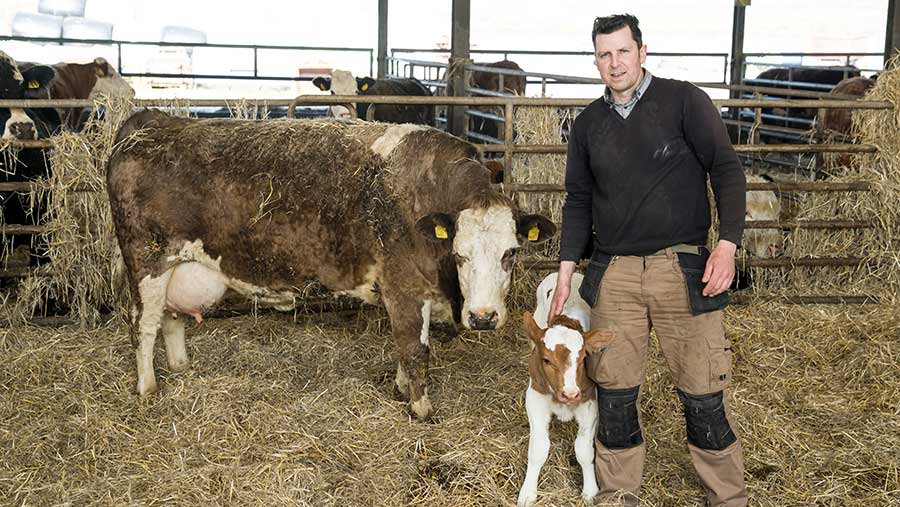Transition Farmer update: Fergal Watson faces staff changes
 Fergal Watson © Steffan Hill
Fergal Watson © Steffan Hill A combination of retiring staff and soaring input costs has seen beef and arable producer Fergal Watson take steps towards his key transition goals.
The Watson family – Fergal, his wife, Lucy, and daughter Eabha-Marie – farm 285ha across three farms near Cloughey, on the Ards peninsula in Northern Ireland.
Mr Watson’s main goals for restructuring the beef herd, improving business resilience and recruiting staff.
See also: Staffing and soil health key transition aims for suckler farm
These have come into sharp focus as a pending retirement of a long-standing staff member and increased input costs have added pressure for change.
The staff member will leave in October after 44 years on the farm. Although the remaining employee has even longer service at 48 years, he is also planning to retire in the next year. Mr Watson is concerned about the immediate and longer-term loss of manpower, which will add pressure to workloads.
“There will just be two of us in the short term, so we have begun restructuring the beef cattle to make work more manageable,” he says.
Change in genetics
The cattle are split into a suckler herd and bought-in dairy-bred finishers. In the suckler herd, a switch from continental types to Stabiliser and Hereford genetics has already begun with the aim of using more docile, earlier-finishing animals.
This should make management easier, because the outgoing Limousin animals can be flightier, Mr Watson explains.
More generally, a policy has been introduced to take out any underperforming animals in a bid to upgrade the herd.
A higher number of carefully selected home-bred replacements will be drawn into the herd as part of that process.
For the dairy-bred finishers, the approach has been to cut back on numbers for the foreseeable future. Normally, the farm buys in about 50-70 dairy-bred calves through the summer, but none has been bought in this year.
The decision was taken in part because calf prices and input costs were high, putting a squeeze on any potential margins. But the reduced labour capacity was also a key factor, with the labour pinchpoint during the autumn and winter housing period.
Cover crops
Along with management aims for the cattle, the arable enterprise has seen changes this summer. For the first time, cover crops have been planted across all the arable fields.
Although there is, as yet, no funding under environmental schemes, the benefits of cover crops have already been seen after some were planted last year.
The additional nutrients supplied by the overwintering crops allowed a reduction in fertiliser of about 30-35 units/acre, says Mr Watson.
Despite the reduction in fertiliser, the farm produced its best spring barley crop on the land following the cover crop.
Cover crops also benefit the soil structure and reduce the amount of moisture. This will make it easier to get on to the land earlier next spring right across the arable area, he says.
Beans benefits
A further success this year has been the introduction of beans into the rotation. The crop grew well and the nitrogen requirement for the following crop has been halved.
All of the protein for the beef herd is now home-grown, protecting the farm from soaring input costs.
However, plans to grow multispecies swards were thwarted by the summer drought. There was no point in drilling seed into soil with no moisture, so the multispecies swards will remain on hold.
